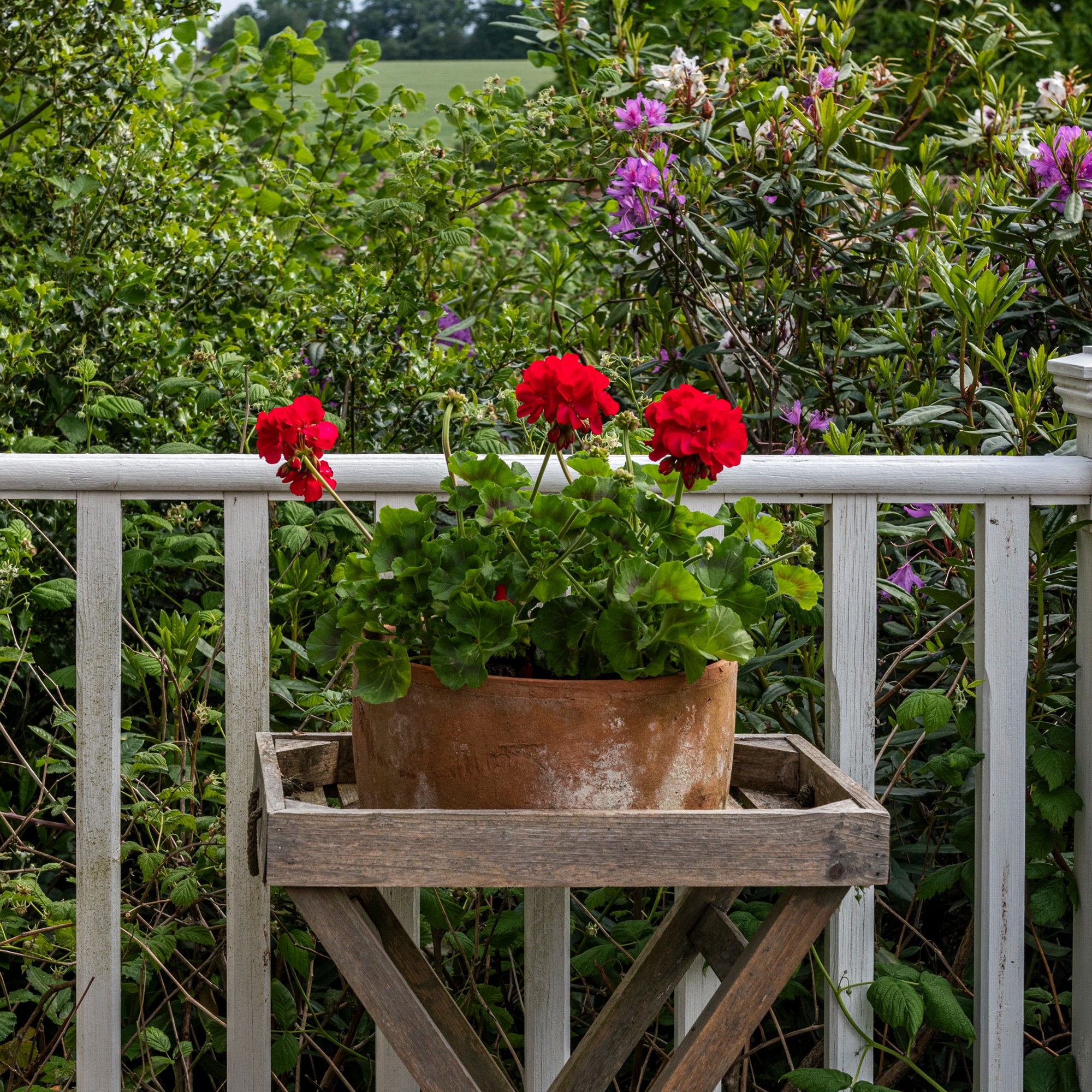
It's flowering season for geraniums, and it's easy to see why they make such popular plants in the garden. 'But why are my geranium leaves turning red?', you might ask.
Well, it's a more common problem than you might think, and it has a lot to do with simple watering mistakes.
'When geranium leaves start to turn red, it indicates that something is wrong and the plant is under stress,' advises John Clifford, director at Gardenstone. 'Although the bright red leaves have a beautiful appearance, it's crucial that the issue is addressed in order for the geranium to return to full health.'
So, if you've nailed how to grow geraniums and are looking to solve this popular issue with the plant, you've come to the right place.
Why are my geranium leaves turning red?

If your geranium leaves are turning red, the plant is likely stressed.
The list of potential stressors is long, but we've asked the experts for the most likely suspects.

1. Your geraniums have a nutrient deficiency
'Geranium leaves change colour when they lack nutrients,' says Monique Gudgeon, garden director at Sculpture by the Lakes.
The missing nutrients are likely magnesium and phosphate, but luckily, a wide range of feeds exist to counteract the deficiency.
'If you notice discolouration on your geranium leaves, make sure you water the plant and provide it with plenty of feed,' advises Monique. 'It’s important to remember that geraniums in a pot rely solely on you for water and nutrition – it’s best to water and feed it once a week.'
What you'll need
Combat nutrient deficiencies with this excellent all-rounder that your geraniums will love.
Introduce this stunning variety to your garden, perfect for borders, balconies or patio displays.
This potting compost will feed your geraniums for up to three months and store and release water to your plants when they need it.
2. You're overwatering your geraniums
Overwatering is easily done - and if you're wondering if you can overwater plants in the summer, the answer might surprise you.
'I recommend two thorough waters a week, but be careful not to overwater as this can also affect the health of the plant,' advises John.
Knowing the signs of an overwatered geranium can help you make changes before it's too late for the plant.
According to John, the symptoms are noticeable: 'When geraniums are overwatered, their leaves start to turn limp and yellow. The roots will also start to rot.'
3. You're not watering them enough
On the other side of the coin, underwatering can be an alternative reason why your geranium leaves are turning red.
In some cases, red geranium leaves can actually be a sign of inadequate watering,' says John. 'To rule this out, you can look out for curling of the leaves and check at the base of your geranium. If the soil is parched, it might be a good idea to water the plant more regularly.'

FAQs
Why are my geranium leaves changing colour?
Yellow geranium leaves are another common geranium issue. Besides watering mistakes, there is another likely culprit for yellowing geranium leaves.
'Geranium leaves will likely start to change colour due to a lack of sunlight,' explains John from Gardenstone. 'Geraniums are sun-loving plants, so they need to be planted in a full-sun area of your garden that is free from shade.'
How can you tell the difference between an overwatered geranium and an underwatered geranium?
'If you stick your finger in the soil around your geranium and it’s dry, that is usually a sign that it needs water,' Says Monique from Sculpture by the Lakes. Additionally, you can lift the pot and feel its weight. If it's noticeably light, this can also mean that it’s dry.'
'On the other hand, overwatered geraniums will have slimy roots and damp soil.'
You can also tell the difference between an overwatered geranium and an underwatered geranium by looking at the leaves.
'Overwatered geraniums can be identified by their yellow limp leaves,' explains John from Gardenstone. 'Although underwatered geraniums may also have yellow leaves, they will likely have curled edges instead of being limp due to their dry roots.'
Red geranium leaves are more common than you think, but with a few changes to the way you care for the plants, you could avoid the issue altogether.







